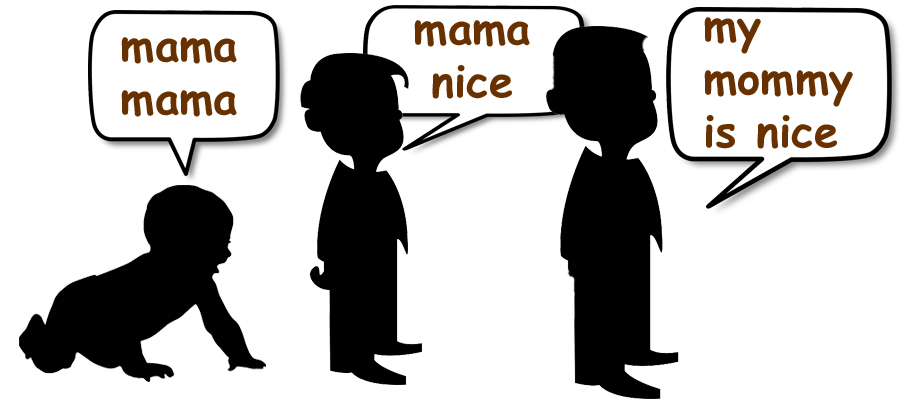How Does Communication Develop?
Anyone who has observed a child learning to speak and recognize words knows that acquiring these skills takes time. What is the typical development process for recognizing, understanding, and producing language?

Within the first few months of life, babies can pick out speech sounds, including sounds not in their native tongue.
Recognizing Language
Early in life, babies begin to differentiate the sounds they hear—making the distinction between language and noise. In fact, within the first few months, babies can pick out speech sounds, including sounds not in their native tongue. For example, Japanese babies can distinguish r and l and babies born to English speakers can distinguish French nasal sounds—which their older relatives might not be able to do1. By 10 months, infants can discriminate the building blocks of spoken language—vowels, consonants, and syllables.
Producing sounds
Long before children can effectively speak, they begin to make sounds that are language-like.. By six months, babies begin to make phonetic sounds—like singular vowels “ooh” and “ah”. A few months after that, babies babble in syllables—such as “da” or “ba”. By the end of their first year, the babble, still gibberish, resembles sentence-long streams.
Understanding Language
Children need to understand words before they begin to speak them out loud. At around 9 months, children begin to comprehend words, with the “first word” being spoken at around a year. From there, children learn words rapidly, producing phrases at 18 to 24 months. Between two and three years old, children learn the grammatical structure of their native language, and by the end of three, they generally speak in appropriate sentences1.

A child’s first word is spoken around 12 months of age, phrases around 18 to 24 months of age, and sentences by three years of age.
Also in this section:
How does our brain process language?
How does our brain process nonverbal communication?
How do autistic brains differ in communication?
What research challenges do we face in studying communication?
| References: |
1. Kandel ER, Shwartz JH, Jessel TM (2000) Principles of Neural Science. 4th edition.McGraw-Hill,NY. 1414 pp. |


